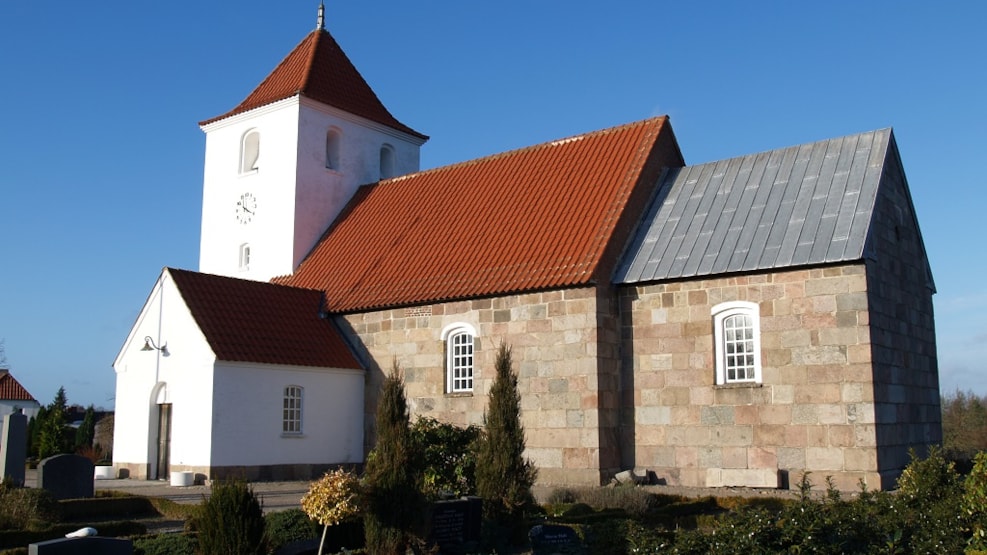
Døstrup Church
In the heart of Døstrup, north of Hobro, you can experience the beautiful Døstrup Church, which holds a long history.
The church of Døstrup is a typical Romanesque fieldstone church from around 1200 and originally consisted only of a choir and nave. The porch was built in 1880, and the tower was erected in 1944, funded by merchant Niels Hvorslev and designed by Royal Building Inspector E. Packness, Aalborg.
The north door is now walled up, but the portal made of two man-sized granite stones adorns the north wall of the church. A threshold stone is located near the church. The south door, which is in use, has tall doorposts with heavy round bars that continue on a tympanum, with its field divided by a low, vertical round bar. An original window on the north side is still in use. Both the walls of the choir and the nave diverge significantly upward. Above the apex of the choir arch, there is a lime-painted carved star pattern, and around 1600, a leaf ornamentation was painted on the arch face, which "astonishingly anticipates Bindesbøll's style."
The altarpiece is a beautiful Renaissance heritage, but by 1702, it had fallen into disrepair and was repainted in red, green, as well as gray-violet and yellow-gray tones. In 1738, the altarpiece was painted again, and a rough image of the resurrection was painted on the top part. The altarpiece has been "treated" several times before being thoroughly restored in 1926 by the painter Frode Nielsen according to the instructions of the National Museum. A copy of the Last Supper painting from the altarpiece in Tranebjerg Church on Samsø was placed in the large field. The pulpit is a beautiful oak woodwork in the solid Renaissance style of the 17th century.
The Romanesque granite font is of the West Jutland type with a smooth, Attic-profiled basin on a base shaped like a capital.